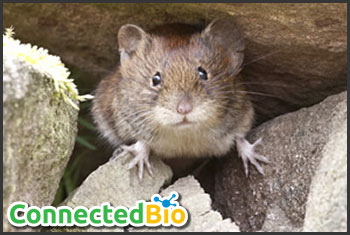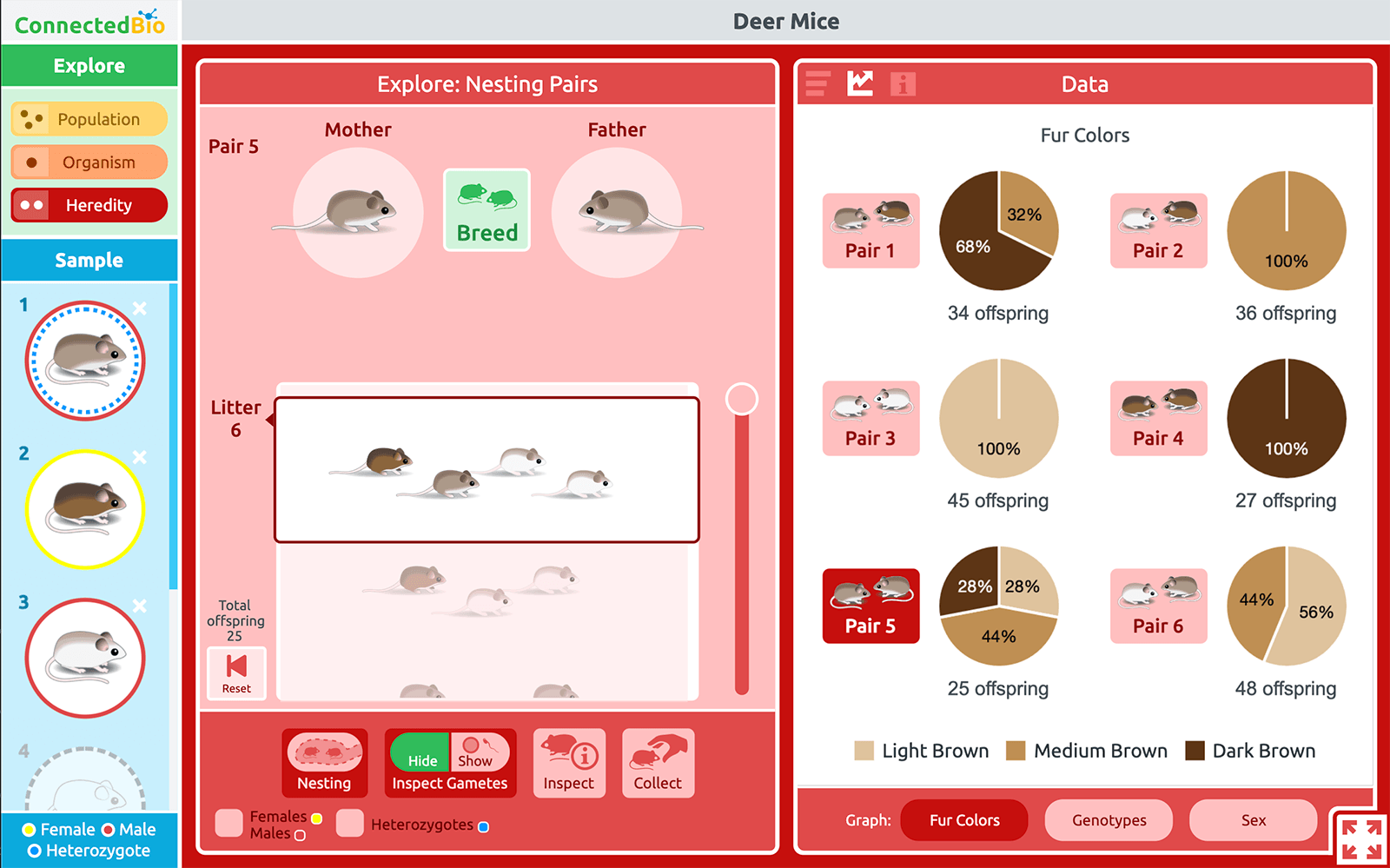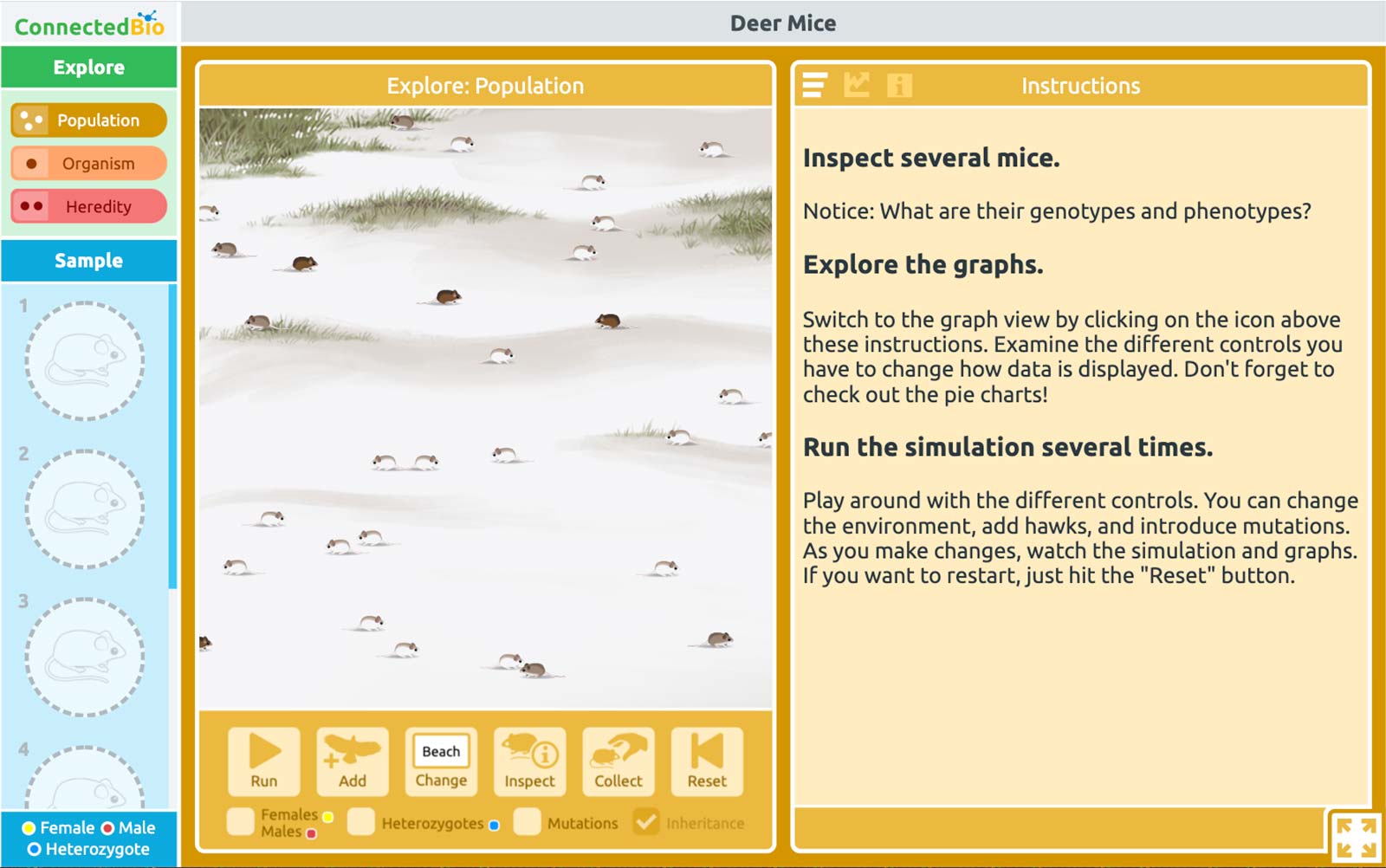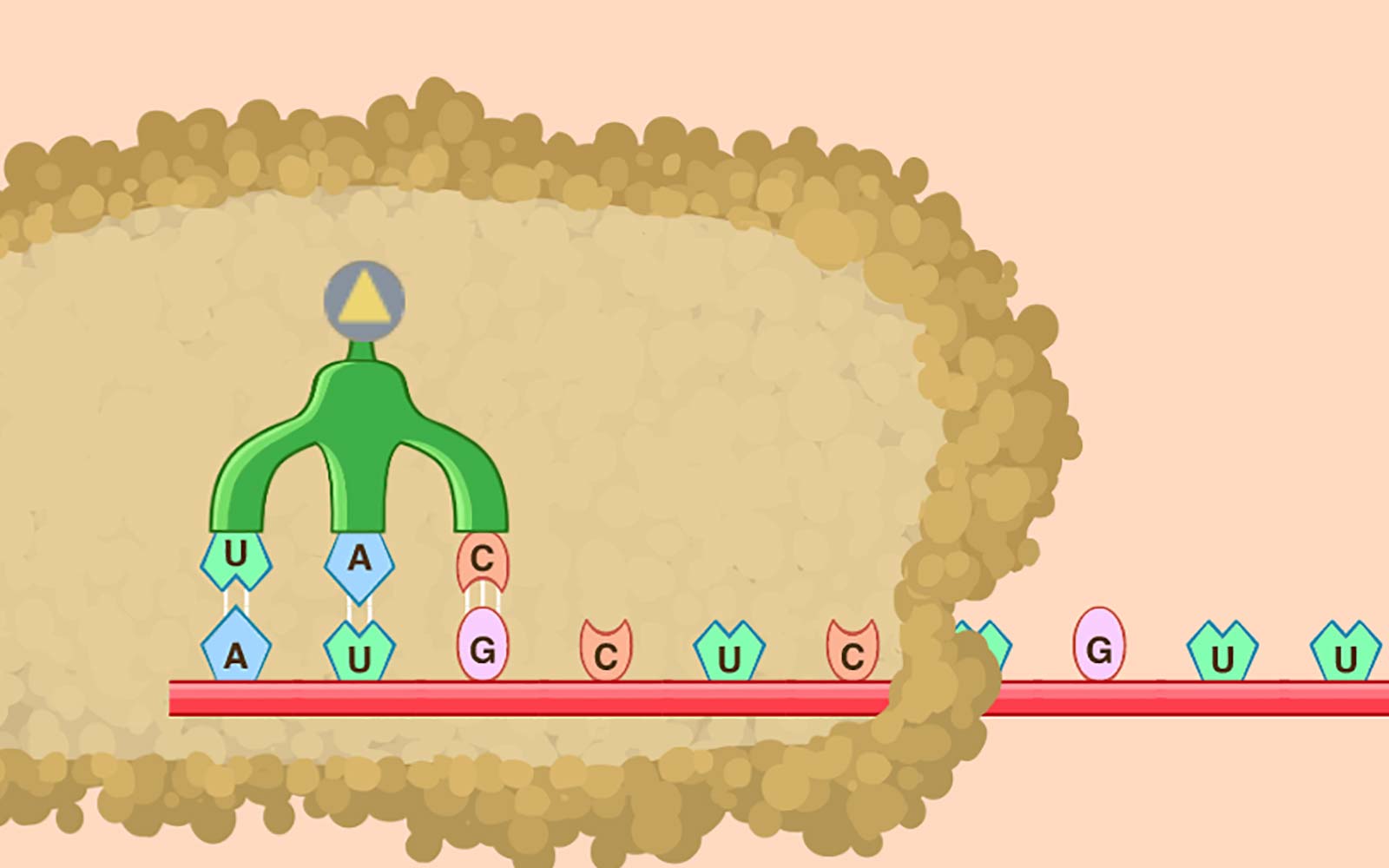Our current lessons are listed below. The full 15-lesson sequence on Deer Mouse Fur Color is listed first, followed by four "stand-alone lessons" that can be used independently and take only one or two class periods each. Below the stand-alone lessons is a video showcasing the ConnectedBio Multi-Level Simulation.
Deer Mouse Fur Color: From the Field to the Beach
Explore the deer mouse, its fur color, and how it has evolved over time in different habitats. Engage in the practices of science using a series of interactive computer simulations to create models of evolutionary change across levels of biological organization, from molecules and cells to organisms and populations.
This sequence of activities is assignable via the Concord Consortium's STEM Resource Finder. View the full curriculum package and teacher resources at learn.concord.org/connectedbio.
Demystifying Punnett Squares with ConnectedBio (PDF Version)
The goal of this activity is to demystify the science behind Punnett Squares and explore data and statistical representations in genetics and heredity. Begin by breeding two parent mice and observe the ratios in the pie chart as more offspring are bred in each litter. Compare the ratios between different pairs of parents and identify how they are different or similar. Finally, use the simulation controls to show gametes and reveal how each offspring obtained its genotype from its parents.
Adaptation is for Populations (PDF Version)
Deer mice live in many different habitats across North America. In each subpopulation, their fur coloring is a good match to their habitat. How did this come to be? Students run simulated experiments controlling habitat, predators, and displays of data. An optional datasheet can be used to structure quantitative work. The activity includes suggested questions for students to investigate, with particular attention to how the adaptation occurs solely at the population level, while natural selection operates on individuals.
Relative Frequency of Alleles (PDF Version)
The MC1R gene, in part, controls deer mouse fur. Two alleles, RD and RL , in different combinations lead to light, medium, or dark brown fur. Students learn how to calculate relative allele frequencies, and then investigate how these frequencies may change over time as the environment in which the deer mice live changes. The activity is divided into four steps, which guide students to a deeper understanding of how evolution is measured.
From DNA Mutations to Protein Structure (PDF Version)
To combat the common misconception that all mutations have large effects on proteins, students experiment with the Protein Synthesis Simulation to learn about the relationship among DNA, codons, amino acids, and proteins. At first, students investigate a strand of DNA that includes all 20 amino acids. Then, they make guided changes to discover that sometimes a single change can stop most of the protein from being formed, while another change produces no noticeable affect at all. Next, they complete challenges to mutate a DNA strand, and conclude with a mini-research project on mutations.
Watch a screencast to learn about the ConnectedBio Multi-Level Simulation
The ConnectedBio Multi-Level Simulation (MLS) is designed to allow the exploration of a single evolutionary phenomenon across levels of biological scale. Adaptation occurs at the population level while survival affects individual organisms. Traits (which can help survival) are generated at the molecular and cellular level. This screencast takes you into each level, explaining how it can be used to help students connect the adaptation of a population to the genetics and cell biology that explains the way a trait emerges from genotype.






